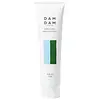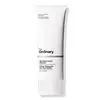What's inside
What's inside
 Key Ingredients
Key Ingredients

 Benefits
Benefits

 Concerns
Concerns

 Ingredients Side-by-side
Ingredients Side-by-side

Water
Skin ConditioningDicaprylyl Ether
EmollientCaprylic/Capric Triglyceride
MaskingPropanediol
SolventHelianthus Annuus Seed Oil
EmollientBehenyl Alcohol
EmollientPentylene Glycol
Skin ConditioningGlycerin
HumectantPolyglyceryl-2 Stearate
EmulsifyingGlyceryl Stearate
EmollientStearyl Alcohol
EmollientMannan
Sodium Citrate
BufferingSalix Alba Bark Extract
AstringentCitrus Aurantium Dulcis Peel Oil
MaskingPhytic Acid
Glycyrrhiza Glabra Root Extract
BleachingCananga Odorata Flower Oil
MaskingCocos Nucifera Oil
MaskingMelaleuca Alternifolia Leaf Oil
AntioxidantTocopherol
AntioxidantWater, Dicaprylyl Ether, Caprylic/Capric Triglyceride, Propanediol, Helianthus Annuus Seed Oil, Behenyl Alcohol, Pentylene Glycol, Glycerin, Polyglyceryl-2 Stearate, Glyceryl Stearate, Stearyl Alcohol, Mannan, Sodium Citrate, Salix Alba Bark Extract, Citrus Aurantium Dulcis Peel Oil, Phytic Acid, Glycyrrhiza Glabra Root Extract, Cananga Odorata Flower Oil, Cocos Nucifera Oil, Melaleuca Alternifolia Leaf Oil, Tocopherol
Water
Skin ConditioningBehenyl Alcohol
EmollientPolyglyceryl-2 Stearate
EmulsifyingGlycolipids
Skin ConditioningPentylene Glycol
Skin ConditioningPolyglyceryl-6 Dicaprate
EmulsifyingGlyceryl Stearate
EmollientStearyl Alcohol
EmollientDiutan Gum
Polyacrylate Crosspolymer-6
Emulsion StabilisingSodium Phytate
Phytic Acid
Trisodium Ethylenediamine Disuccinate
Sodium Benzoate
MaskingPhenoxyethanol
PreservativeChlorphenesin
Antimicrobial
 Reviews
Reviews

Ingredients Explained
These ingredients are found in both products.
Ingredients higher up in an ingredient list are typically present in a larger amount.
Behenyl Alcohol is a type of fatty alcohol (these are different from the drying, solvent alcohols).
Fatty Alcohols have hydrating properties and are most often used as an emollient or to thicken a product. They are usually derived from natural fats and oils; behenyl alcohol is derived from the fats of vegetable oils.
Emollients help keep your skin soft and hydrated by creating a film that traps moisture in.
In 2000, Behenyl Alcohol was approved by the US as medicine to reduce the duration of cold sores.
Learn more about Behenyl AlcoholGlyceryl Stearate is a mix of glycerin and stearic acid.
It is used to stabilize the mixing of water and oil ingredients. By preventing these ingredients from separating, it can help elongate shelf life. It can also help thicken the product's texture.
As an emollient, it helps soften skin and supports barrier-replenishing ingredients.
In cosmetics, Glyceryl Stearate is often made from vegetable oils or synthetically produced.
This ingredient may not be fungal-acne safe
Fun fact: The human body also creates Glyceryl Stearate naturally.
Learn more about Glyceryl StearatePentylene glycol is typically used within a product to thicken it. It also adds a smooth, soft, and moisturizing feel to the product. It is naturally found in plants such as sugar beets.
The hydrophilic trait of Pentylene Glycol makes it a humectant. As a humectant, Pentylene Glycol helps draw moisture from the air to your skin. This can help keep your skin hydrated.
This property also makes Pentylene Glycol a great texture enhancer. It can also help thicken or stabilize a product.
Pentylene Glycol also acts as a mild preservative and helps to keep a product microbe-free.
Some people may experience mild eye and skin irritation from Pentylene Glycol. We always recommend speaking with a professional about using this ingredient in your routine.
Pentylene Glycol has a low molecular weight and is part of the 1,2-glycol family.
Learn more about Pentylene GlycolPhytic Acid is a gentle AHA and antioxidant. AHAs are chemical exfoliants that help remove dead skin cells. Phytic Acid has a slight and mild exfoliating effect.
The chemical makeup makes it classified as an AHA, much like lactic acid.
In some cases, it is a chelating agent. Chelating agents help prevent metals from binding to water, helping to stabilize the ingredients in a product.
An interesting fact about phytic acid is that it is considered an antinutrient. People do not have the enzyme needed to properly breakdown and digest phytic acid. When ingested, phytic acid binds to minerals and prevents them from being absorbed.
Read more about some other popular AHA's here:
Learn more about Phytic AcidPolyglyceryl-2 Stearate isn't fungal acne safe.
Stearyl Alcohol is a type of fatty alcohol from stearic acid. It is a white, waxy compound used to emulsify ingredients.
Fatty Alcohols are most often used as an emollient or to thicken a product. Emollients help soothe and hydrate the skin by trapping moisture.
They are usually derived from natural fats and oils and therefore do not have the same drying or irritating effect as solvent alcohols. FDA allows products labeled "alcohol-free" to have fatty alcohols.
Learn more about Stearyl AlcoholWater. It's the most common cosmetic ingredient of all. You'll usually see it at the top of ingredient lists, meaning that it makes up the largest part of the product.
So why is it so popular? Water most often acts as a solvent - this means that it helps dissolve other ingredients into the formulation.
You'll also recognize water as that liquid we all need to stay alive. If you see this, drink a glass of water. Stay hydrated!
Learn more about Water